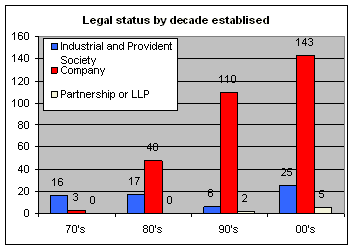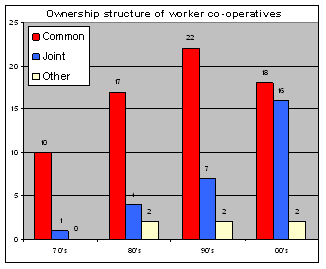 Last week I went to Exeter and Plymouth to visit Co-operativesSW and some other Co-operatives including Co-operative Enterprise Unit, Meta4Theatre and Zebra Collective. Below is a quick look at Zebra Collective a training and facilitation worker co-operative based in Plymouth.
Last week I went to Exeter and Plymouth to visit Co-operativesSW and some other Co-operatives including Co-operative Enterprise Unit, Meta4Theatre and Zebra Collective. Below is a quick look at Zebra Collective a training and facilitation worker co-operative based in Plymouth.Most of their income derives from delivering training - particularly in the areas of equality, participation and communication skills. Operating mainly with 3rd sector and public agencies in the community, health and social care sectors. Zebra is an organisation motivated by its strong commitment to its values of social justice and consistent in the quality of its work.
History
Zebra collective was founded in 2003 as a company limited by guarantee and run as a worker co-operative. Three founder members with experience in the health and social care sector wished to set up an independent business that offered good quality employment.
They received generous and excellent support from Co-active (formerly Plymouth Co-operative Development Agency) and chose the co-operative model as they agreed with the Values and Principles.
Coming from a public/grant-aided sector background some members found the culture change of working in a co-operative business difficult “if you don’t deliver work you can't get paid”. Some members did not make this transition and left, but others persevered. The co-operative survived and had steadily grown in strength.
Four phases of development:
- Started with 3 founders with 4 more joining quite rapidly after start, structure was informal collective with only a few earning sufficiently for full time employment.
- As a number of members were partly or fully employed elsewhere, the co-operative began to split and inadvertently the feel of a management committee merged. This was tackled as the co-operative created a definitive split between the core membership group and a wider group of associates to properly segment membership and improve Governance. Those members not doing paid work for Zebra gave up their membership and became Zebra Associates, an informal collective that exists to this day (see below)
- Zebra in the last 15 months has gone through a growth phase and is now up to 7 members (all but one part-time). This can be attributed to a positive cycle of gaining more work, including winning larger contracts, that has enabled them to recruit good people and therefore deliver more work.
- 2008 & 2009: winning contracts with regional government to support local authorities in implementing the empowering agenda, including the "Duty to Involve" their citizens.
- Significant growth in demand for its equality and diversity training, including winning and keeping contracts to deliver equality and diversity training for Devon County Council and winning a new contract for such work with Westward Housing. In September 2009, Bernadette Chelvanaygam was recruited as Zebra's new Equality and Diversity Lead.
- After receiving some training in solutions focus communication in October 2009, in November Devon County Council began using solution focused techniques to review it strategic plan and asked Zebra for more training.
- Facilitated Co-operatives SW AGM, 2008 & 2009.
- Attained Social Enterprise Mark, July 2008.
Zebra has a flat management and pay structure. As members all get paid the same irrespective of role; they work pay out as a proportion of two main roles carried out: training/facilitation (4/5) and administration (1/5). At the outset in 2003, in their area the market rate for a facilitator was roughly £30,000 and £14,000 for an administrator, they therefore worked pay out to be £27,000 (it has since risen). Zebra also operate good flexible working conditions like 6 weeks annual leave.
Zebra operate on the more than profit principle and are looking to enshrine this in their governing documents. Any surplus earnt is used to offer free or subsidised work to good organisation with limited ability to pay and to pump-prime new initiatives.
Membership is split into core members (Employee/Directors) and associates. Some associates get the odd bit of work to fill in gaps in capacity, others act like a “friends of” and get involved in recruitment panels and in other more voluntary ways. Zebra organises events for Associates to keep them engaged in their work. The Zebra Associate group exists also for collective action beyond that of the Zebra worker co-operative, e.g. climate change action and other social justice campaigns. etc
The team at Zebra Collective believe in and employ their work, and frequently reflect on the benefits of worker ownership of their organisation. They have great hopes for the co-operative sector and are keen to contribute actively to its development. If you in the SW please get in touch with them.

 This first chart looks at all live worker co-operative records, we have 3 live co operatives dating back before the 70’s but these have not been included in this chart. IPS’s were the traditional legal form for co operatives, and most early worker co operatives registered as IPS’s. However this model was seen as cumbersome (needed 7 members to start) and quite expensive.
This first chart looks at all live worker co-operative records, we have 3 live co operatives dating back before the 70’s but these have not been included in this chart. IPS’s were the traditional legal form for co operatives, and most early worker co operatives registered as IPS’s. However this model was seen as cumbersome (needed 7 members to start) and quite expensive.







